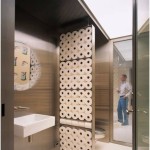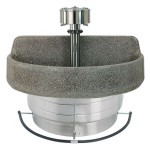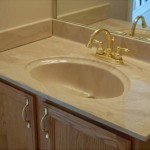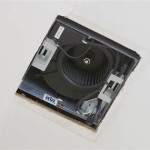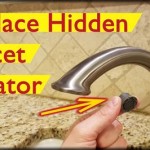What Is The Most Durable Bathroom Vanity Top?
Selecting a bathroom vanity top involves navigating a complex interplay of aesthetics, functionality, and durability. The bathroom environment, characterized by fluctuating humidity, frequent water exposure, and the potential for staining agents like cosmetics and cleaning products, demands a vanity top material that can withstand these challenges. The most durable bathroom vanity top isn't a one-size-fits-all answer; it depends on weighing different material properties against individual needs and priorities. This article will examine various materials commonly used for bathroom vanity tops, assessing their durability based on factors such as scratch resistance, stain resistance, water resistance, and overall lifespan.
Durability, in the context of bathroom vanity tops, encompasses several key aspects. The ability to resist scratches is paramount, as everyday use involves placing items like toiletries, hair styling tools, and jewelry on the surface. Stain resistance is equally important, considering the likelihood of spills from makeup, hair dye, and cleaning solutions. Water resistance is crucial to prevent damage from standing water and humidity, which can lead to warping, swelling, or the growth of mold and mildew. Finally, the overall lifespan of the material, considering its inherent properties and resistance to wear and tear, dictates its long-term value.
Quartz: A Champion of Engineered Durability
Quartz is an engineered stone composed primarily of natural quartz crystals, typically around 90-95%, bound together with resins and pigments. This composition results in a material that boasts exceptional durability and versatility. Quartz is renowned for its non-porous nature, which makes it highly resistant to staining and water damage. Unlike natural stone like granite or marble, quartz does not require sealing, simplifying maintenance and preventing the absorption of liquids that can lead to discoloration or bacterial growth.
Scratch resistance is another key strength of quartz. The hardness of the quartz crystals themselves contributes to a surface that is difficult to scratch under normal use. While not completely impervious to scratching from exceptionally sharp objects or abrasive materials, quartz is significantly more resistant than many other countertop options. The resin component in quartz also lends a degree of flexibility, making it less prone to chipping or cracking compared to some natural stones.
In terms of aesthetics, quartz offers a wide range of colors, patterns, and finishes. The engineered nature of the material allows for consistent color distribution and the creation of patterns that mimic natural stone or offer more contemporary designs. This versatility makes it suitable for a variety of bathroom styles, from traditional to modern. The durability and design flexibility of quartz frequently place it among the top recommendations for long-lasting and aesthetically pleasing bathroom vanity tops.
Solid Surface: Seamless and Resilient
Solid surface materials, such as Corian, are synthetic materials composed of acrylic polymers, resins, and mineral fillers. These materials are known for their seamless appearance and exceptional durability. The non-porous nature of solid surface makes it highly resistant to staining and water damage, similar to quartz. Solid surface materials are also renewable, meaning that minor scratches or stains can often be sanded away, restoring the surface to its original condition. This repairability is a significant advantage over some other materials that require more extensive repairs or replacement in the event of damage.
The composition of solid surface materials makes them highly resistant to impact and cracking. While they may be susceptible to scratching from sharp objects, these scratches are typically superficial and can be easily buffed out. The seamless construction of solid surface vanity tops eliminates the grout lines and seams that can harbor dirt and bacteria, contributing to a more hygienic bathroom environment. This ease of cleaning and maintenance further enhances the long-term durability of solid surface materials.
Solid surface materials are available in a variety of colors and patterns, although the range may not be as extensive as with quartz. They can also be molded into different shapes and sizes, allowing for custom designs and integrated sinks. This flexibility in design, combined with its durability and ease of maintenance, makes solid surface a popular choice for bathroom vanity tops, particularly in high-use bathrooms or those prone to moisture.
Granite: Natural Beauty with Proper Care
Granite is a natural stone formed from the slow cooling of magma deep beneath the Earth's surface. This process results in a dense, durable material that is prized for its natural beauty and unique variations. Granite is highly resistant to heat, making it a suitable choice for bathrooms where hot styling tools may be used. However, granite is a porous material, meaning that it can absorb liquids and stains if not properly sealed.
The durability of granite depends significantly on the quality of the sealant and the frequency of resealing. A high-quality sealant will protect the stone from absorbing liquids, preventing stains and the growth of bacteria. Regular resealing, typically every one to two years, is necessary to maintain this protective barrier. Neglecting to reseal granite can lead to permanent staining and damage, compromising its appearance and longevity.
While granite is generally resistant to scratching, certain types of granite may be more susceptible to scratching than others. Darker granites tend to be denser and more resistant to scratching than lighter granites. Additionally, granite can be prone to chipping or cracking if subjected to heavy impact. Despite these potential drawbacks, granite remains a popular choice for bathroom vanity tops due to its natural beauty and durability, provided that it is properly sealed and maintained.
Marble: Luxurious but Demanding
Marble, another natural stone, is formed from the metamorphism of limestone or dolomite. It is characterized by its elegant veining and luxurious appearance. Marble is relatively soft compared to granite, making it more susceptible to scratching and etching. Etching occurs when acidic substances, such as lemon juice or vinegar, come into contact with the marble surface, causing a dull spot or discoloration.
Marble is also a porous material, similar to granite, and requires sealing to prevent staining and water damage. However, even with a sealant, marble is more prone to staining than other materials like quartz or solid surface. The porous nature of marble also makes it more susceptible to the growth of bacteria and mold if not properly cleaned and maintained. Regular cleaning with a pH-neutral cleaner is essential to preserve the beauty and integrity of marble vanity tops.
While marble offers a timeless and luxurious aesthetic, its durability in a bathroom environment is a concern. The risk of scratching, etching, and staining makes it a high-maintenance option that may not be suitable for high-use bathrooms or those prone to spills. For individuals who appreciate the beauty of marble but are concerned about its durability, consider using it in powder rooms or low-traffic bathrooms where the risk of damage is minimized.
Laminate: Budget-Friendly with Limited Durability
Laminate is a composite material made by pressing together layers of paper and resin over a particleboard core. Laminate is a cost-effective option for bathroom vanity tops and is available in a wide range of colors and patterns, including those that mimic natural stone or wood. However, laminate is not as durable as other materials discussed in this article.
Laminate is susceptible to scratching, chipping, and water damage. The surface is relatively soft and can be easily scratched by sharp objects or abrasive cleaners. Water can seep into the seams and edges of laminate vanity tops, causing the particleboard core to swell and warp. This water damage can lead to delamination, where the laminate layer separates from the core, rendering the vanity top unusable.
While laminate is a budget-friendly option, its limited durability makes it a less desirable choice for long-term use. It is best suited for bathrooms with light use and where budget is a primary concern. Regular cleaning and maintenance are essential to prolong the life of laminate vanity tops, but even with proper care, they are unlikely to last as long as more durable materials like quartz, solid surface, or granite.
Tile: Versatile but Grout-Dependent
Tile vanity tops offer a versatile design option, allowing for a wide variety of colors, patterns, and textures. Tile can be made from various materials, including ceramic, porcelain, and glass. Porcelain tile is generally more durable than ceramic tile, as it is denser and less porous. Glass tile offers a unique aesthetic but may be more susceptible to scratching and chipping.
The durability of tile vanity tops depends heavily on the quality of the installation and the type of grout used. Grout is the material that fills the spaces between the tiles and is responsible for preventing water from seeping beneath the surface. Epoxy grout is more resistant to water and staining than cement-based grout, making it a better choice for bathroom environments. However, epoxy grout can be more difficult to install and may require professional installation.
Even with proper installation and the use of epoxy grout, tile vanity tops are still susceptible to staining and cracking over time. Grout lines can be difficult to clean and can harbor dirt, bacteria, and mold. Additionally, individual tiles can crack or chip if subjected to heavy impact. While tile vanity tops offer a unique and customizable look, their durability is limited by the inherent weaknesses of grout and the potential for tile damage.
Ultimately, the "most durable" bathroom vanity top depends on individual priorities and budget. Quartz and solid surface offer a balance of durability, aesthetics, and ease of maintenance. Granite provides natural beauty with proper care, while marble offers a luxurious look with higher maintenance requirements. Laminate is a budget-friendly option with limited durability, and tile offers versatility but relies heavily on grout maintenance. Careful consideration of these factors will enable individuals to select a bathroom vanity top that meets their specific needs and provides long-lasting performance.
What Are The Best Materials For Bathroom Vanity Countertops

What Is The Most Durable Material For A Bathroom Vanity

The Best Countertop For Bathroom Vanities Daltile

7 Best Bathroom Vanity Top Materials Which Is For Your Home The Reno Super

12 Best Quartz Bathroom Countertops In 2025 Marble Com

Choosing Bathroom Countertops Quartz Granite Or Marble

How To Choose The Best Stone Bathroom Vanity Top Made In

44 Bathroom Vanity Tops Best Countertop Designs

12 Best Quartz Bathroom Countertops In 2025 Marble Com

What Are The Best Surfaces For Bathroom Countertops
Related Posts
